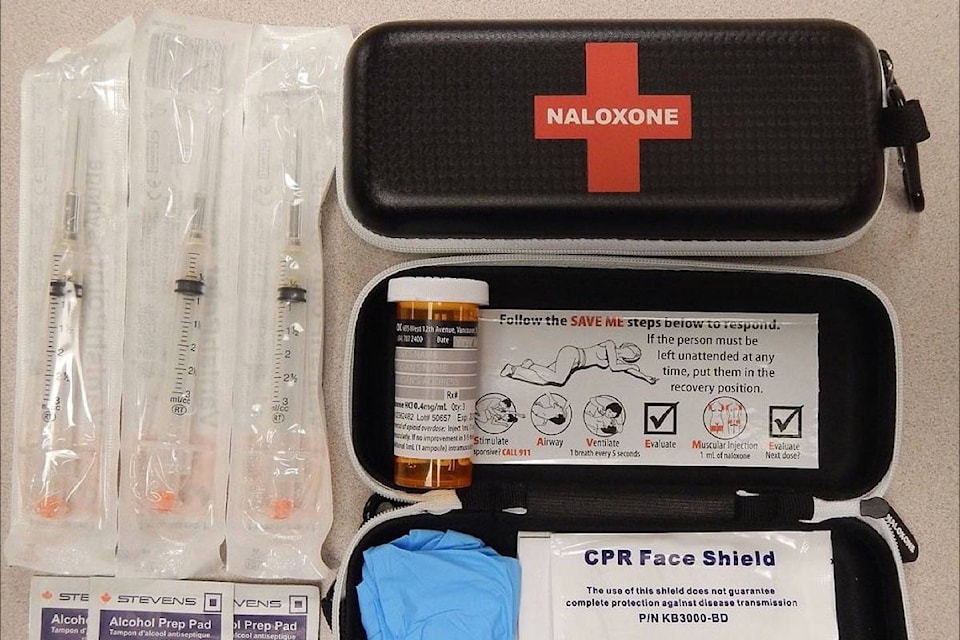More than 50,000 kits containing the life-saving medication naloxone have been used to reverse opioid overdoses in B.C. Since the program started in 2012, 175,022 naloxone kits have been distributed to people who use drugs and those who are likely to witness an overdose through the BC Centre for Disease Control’s (BCCDC) Take Home Naloxone program.
The program launched in 2012 and was scaled up in 2016 in response to the overdose public health emergency. Between 2012 and 2015, 5,073 kits were distributed, and since 2016 there have been 169,949 kits given out.
It’s expected that the total number of kits used to reverse an overdose is far greater than the 50,000 reported. The Take Home Naloxone program does not receive data about every kit distributed in the province.
The free kits are available throughout the province, and there are currently 1,678 active distribution sites, including more than 700 community pharmacies. Other Take Home Naloxone distribution sites include hospitals and emergency departments, health units and health centres, community sites, corrections facilities, peer-led organizations, paramedics with BC Emergency Health Services, housing sites, friendship centres, post-secondary institutions, and treatment facilities.
People who use drugs are often the first on the scene of an overdose and play a critical role in administering naloxone to save their peers. The Take Home Naloxone program is collaborating with partners to explore novel ways of making the life-saving medication more accessible to people who are likely to witness an overdose.
BCCDC is working with BC Emergency Health Services so paramedics responding to an overdose can provide replacement kits to community members who have used their kit. BC Emergency Health Services paramedics respond to an average of 64 overdose or poisoning calls per day in B.C.; community paramedics also distribute naloxone to patients in their homes or during health information sessions.
“I’ve been a naloxone trainer for three years and I’ve trained students, foster parents, parole officers, and people of the community,” says Paul Choisil, harm reduction leader, peer mentor, and Take Home Naloxone trainer at the Robert & Lilly Lee Community Health Centre and a naloxone trainer at Vancouver Detox. “Everyone who might witness an overdose should carry a naloxone kit because it’s a lifesaving tool. I strongly believe every life matters in our community. Too many have died already. You can also make a difference; kits are free.”
BCCDC also advises people who use drugs to get trained in overdose response and pick up a Take Home Naloxone kit, regardless of how they choose to consume, as new research reveals that people who smoke or snort drugs are half as likely to carry life-saving naloxone medication.
“We are dealing with a toxic illegal drug supply,” says Judy Darcy, Minister of Mental Health and Addictions. “Having a kit and knowing how to use it can save a life. In fact, we know that thanks to the heroic efforts of so many, thousands of lives have been saved. My heartfelt thanks to everyone who works tirelessly on the frontlines to train, teach, and administer naloxone.”
A map showing sites where the free Take Home Naloxone kits can be obtained is at https://towardtheheart.com/site-finder.
editorial@accjournal.ca
Like us on Facebook and follow us on Twitter
